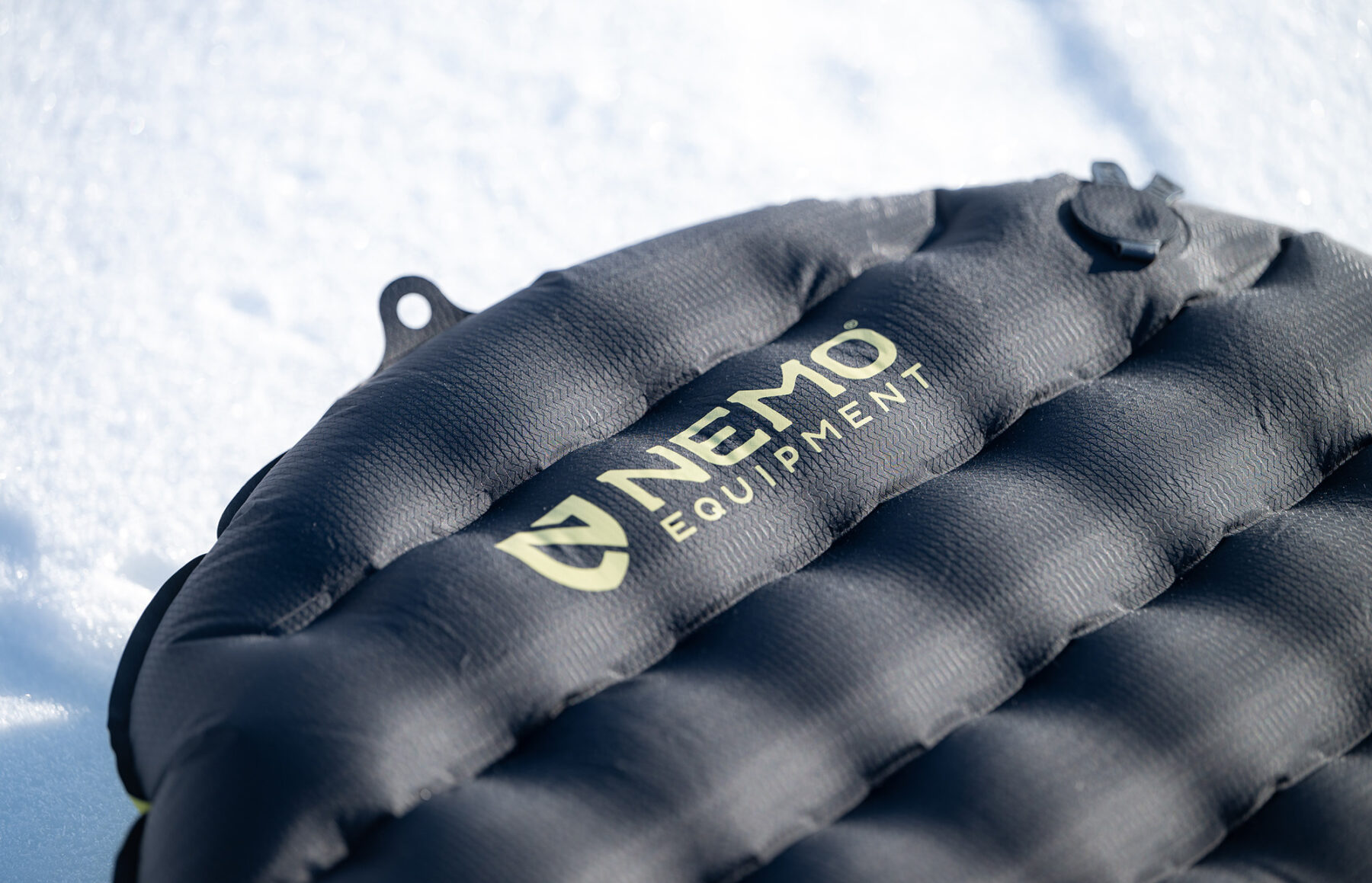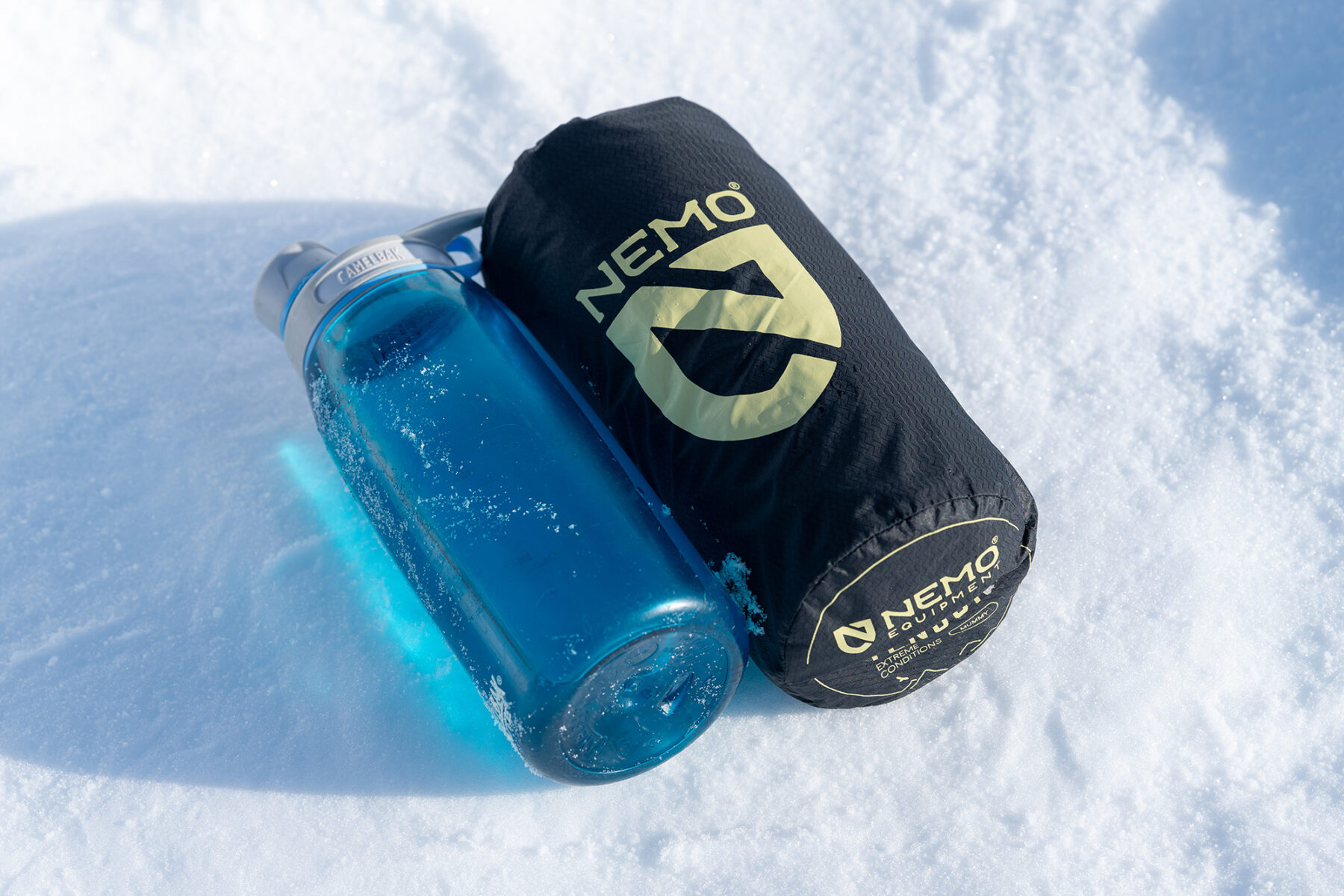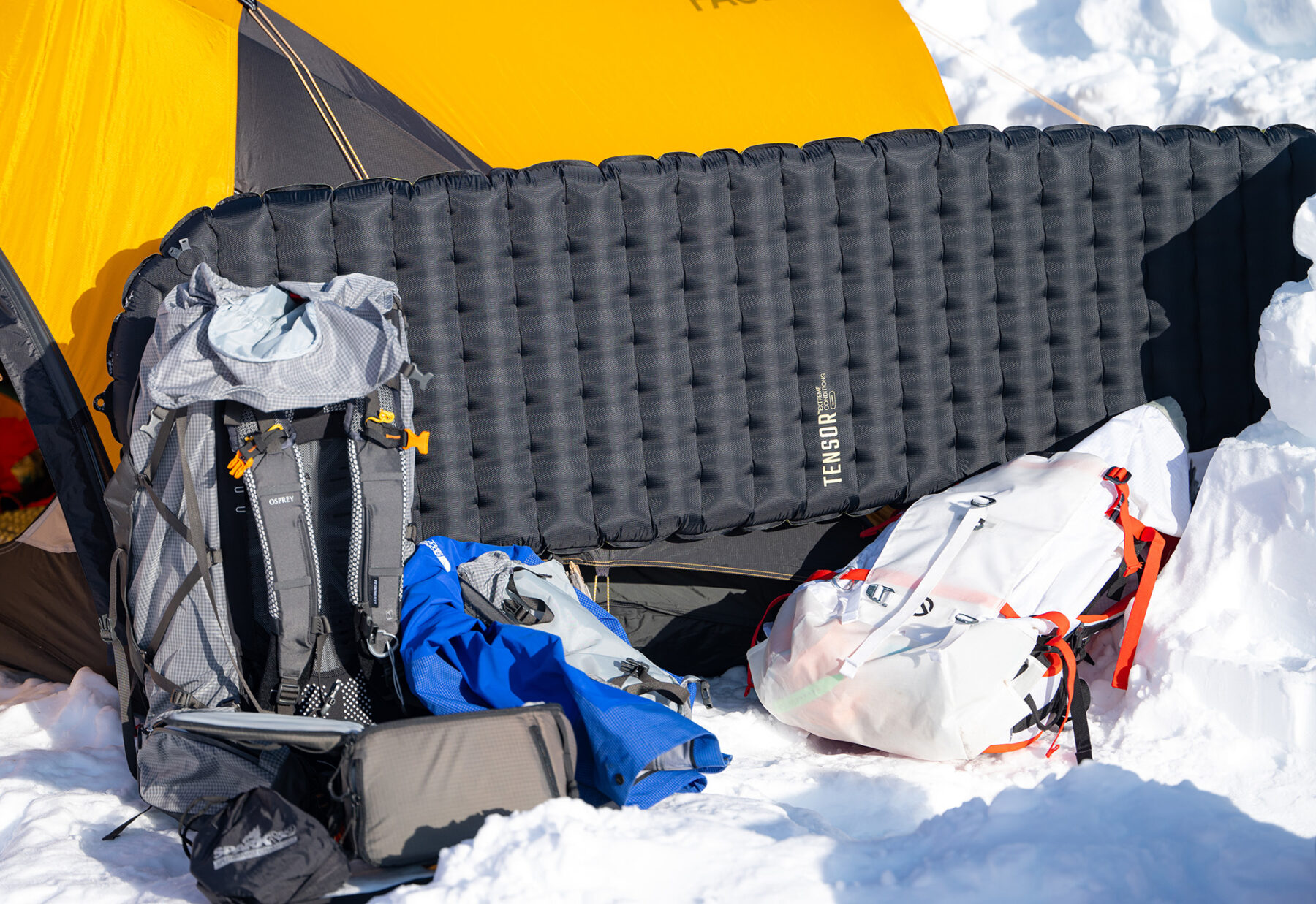Nemo Equipment Tensor Extreme Conditions sleeping pad: Tested

Let’s be honest. The Vic High Country and Kozi main range aren’t the Himalayas or Andes, and they don’t hit the extreme lows of the Arctic. But if you’ve ever climbed Quartz Ridge to camp atop Mt Bogong in a windstorm or hunkered down on the NSW Main Range as the temperature plummets, you’ll know a night in minus-double digits is no summer holiday. When a blizzard strikes, things quickly become uncomfortable or even dangerous. A hot cup of soup in the vestibule of a solid four-season tent can help, as can a well-dug camp and a warm sleeping bag. But the real unsung hero is your sleeping pad. That baffled nylon sleeve at the bottom of your pack can make or break any winter trip, whether battling the snow and ice of the Aussie Alps or getting lost in Tassie’s Southwest.
Only a few sleeping pads cut the mustard when the ground temperature drops into toe-numbing territory. It’s a battle between weight and R-value (insulation), and for several years, the NeoAir XTherm (440g, 7.3 R-value) has reigned supreme, closely followed by Exped’s Ultra 7R Mummy (495g, 7.1 R-value). But this new kid on the block, with the longest name of them all – the Nemo Equipment Tensor Extreme Conditions Ultralight Sleeping Pad – looks to trump them all. Nemo Equipment has entered the four-season-fray with what looks like a new cold-weather champion, boasting an incredulous 8.5 R-value at a mere 472g. We went into the Kozi main range mid-winter to see if it truly lives up to the hype.

Design
There is little doubt the Nemo Equipment Tensor Extreme Conditions Ultralight Insulated Sleeping Pad (let’s call it the ‘Tensor Extreme’) is a highly engineered product aimed fairly and squarely at cold-weather adventurers. Its standout feature is a best-in-class R-value of 8.5, delivering exceptional thermal insulation and making it suitable for sub-zero conditions. Thermal gains often come with a weight sacrifice; however, Nemo tech boffins have inbuilt four layers of Thermal Mirror film, which reflect body heat while maintaining a super lightweight design. Despite its insulating power, the pad’s claimed 472g weight (pad only), or 554g, with the Vortex Pump Sack, velcro strap and stuff sack, makes it one of the warmest and lightest in its class. The pad’s Apex baffle design provides a hefty 8.9cm of cushioning and comfort, particularly for side sleepers.
The unique design uses trapezoidal baffles for warmth, evenly distributed weight, and stability on uneven terrain. The 40D nylon base balances weight-saving with durability, protecting against punctures on rocky ground, whilst the super-light 20D Nylon top sheet sheds grams and features the LayLow™ valve, allowing for rapid inflation and deflation and fine-tuning air pressure for customised firmness. The pad comes in four sizes. Regular Mummy (183 x 51cm/472g), Regular (183 x 51cm/505g), Regular Wide (183 x 64cm/625g) and Long Wide (193 x 64cm/662g).
In the field
At first glance, the Tensor Extreme seems paradoxical: boasting an R-value of 8.5, it’s built for sub-zero conditions yet weighs just 472g, less than a half-litre of water, and packs down smaller than your Nalgene bottle. This is an exciting combo for cool-climate adventurers, where finding a sleeping pad with the right balance of weight versus warmth versus compressibility is more painful than stuffing a wet tent into a frozen stuff sack. While excited about numbers, I recognise they mean little compared to real-world testing. So with a few days of backcountry split-boarding planned, which would be followed by a multi-day mountaineering course mid-winter in Kosciuszko National Park, I tentatively swapped my trusty Thermarest NeoAir XTherm for the new, yet-to-be-proven Nemo Tensor Extreme Conditions Ultralight Insulated Sleeping Pad and headed to the hills.

Immediately, I was impressed with the size and weight. The pad wasn’t far off its official numbers when we weighted it, coming in at 479g, stripped back, and 555g with compression strap, pump sack and stuff sack. (In fact, it is only a bit over 100g heavier than the Nemo Equipment Tensor Trail Ultralight sleeping pad we tested earlier this year.
I generally use a dry sack to protect my sleep system, and the Tensor Extreme squeezed happily inside, alongside my sleeping bag at the bottom of my mountain pack. After a day of hiking and skinning, the Vortex Pump Sack proved its worth, plugging securely into the LayLow valve and inflating the sleeping pad quickly. It immediately became apparent upon inflation that weight-shaving has come at the expense of surface area. The 51cm mummy shape aligns with many other ultra-light pads; however, it somehow felt slimmer and will most likely be too narrow for the broad-shouldered amongst us. Fortunately, the pad comes in three larger models, a bit better suited to my 183cm-plus frame.
On bunking down for my first night, I was concerned about noise. This pad’s thermal efficiency owes much to its four layers of Thermal Mirror film, which reflect your body heat back at you. Such layers are like mini space blankets, but in some sleeping pads, it sounds like you are sleeping on a packet of salt-n-vinegar chips. The Tensor Extreme, however, uses a new baffle tech called Apex, whereby the four layers of thermal film are placed over trapezoidal trusses instead of the typical rectangular design.

Surprisingly, the Tensor Extreme’s high-tech insulation system was relatively quiet and, coupled with a generous 8.9cm of air-cushioning, was a blessing when rolling around at 2a.m. trying to get comfortable on uneven ground. What became apparent, however, was the Tensor Extreme is no skateboard deck when it comes to ‘grippy-ness’ (yep, a tech term). The super-light nylons used on many sleeping pads are often relatively smooth, and the Tensor Extreme is no different. My sleeping bag/pad combo certainly had me realigning myself several times at night. When the time came to strike camp, the LayLow valve was unplugged for rapid deflation, and the compression strap helped tidy the rolled pad, but it was no easy task to get into the stuff sack on occasion. Sometimes, I would ‘nail it’ and other times ‘fight it’, so an extra few millimetres on the stuff sack might be a consideration.
Without putting the pad through its paces long term, durability is hard to judge. Always of concern is the use of lightweight ripstop nylons to achieve ultra-lightweight status. Still, our production model Tensor Extreme didn’t skip a beat and performed spectacularly well for our trip, so you’ll have to watch this space for a more extended durability test.
The final word on the Nemo Equipment Tensor Extreme
The Nemo Equipment Tensor Extreme Conditions Ultralight Insulated Sleeping Pad is valuable kit for adventurers chasing warmth without the bulk. Whether you’re traversing the snowy peaks of Kosciuszko, trekking through the temperate Tasmanian wilderness, or heading to the Patagonian Ice-cap, this pad has your back – literally. It’s quiet, warm, and ultralight, striking that delicate balance between comfort and weight. Sure, the tight stuff sack and slippery deck might be quirks, but these are minor trade-offs when enjoying some of the best insulation in the business.
RRP: $419.95 See Nemo Equipment for more info on this and other products.





